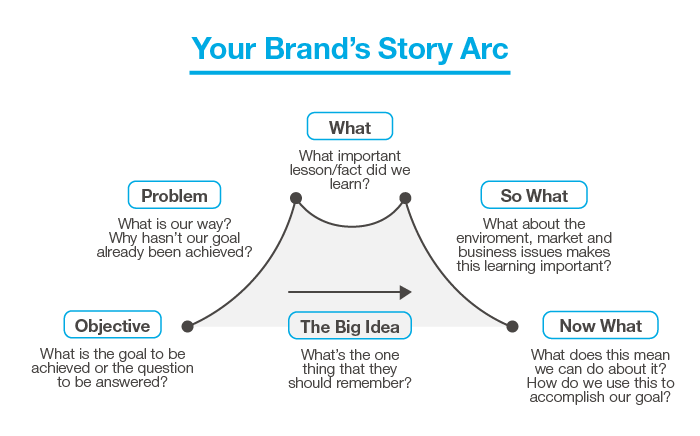On the first day of her high school journalism class, Nora Ephron’s teacher gave the class an assignment. The students were to write the lede of a news story, adapted from the following information:
Kenneth L. Peters, the principal of Beverly Hills High School, announced today that the entire school faculty will travel to Sacramento next Thursday for a colloquium on new teaching methods. Among the speakers will be anthropologist Margaret Mead, college president Dr. Robert Maynard Hutchins and California governor Edmund ‘Pat’ Brown.
Ephron and her classmates set about composing their attempts, meticulously marshalling the facts. She felt certain her lede should contain as much relevant information as possible: Who was involved, what would occur, how and when it would take place and why. Her fellow students took the same approach, wary of being chastised for excluding some pertinent detail.
Yet upon reviewing their efforts, the teacher promptly failed each student in the class. The proper lede, he told them, was, “There will be no school next Thursday.”
Storytelling: How Ideas Succeed
Throughout her illustrious career in writing and film, Ephron never forgot her teacher’s insight: Data alone do not a story make. Indeed, isolated strands of information can actually threaten a story’s very purpose – the meaning it conveys.
Among high school students, word that school will be unexpectedly closed should prompt outbursts of celebration. But because this narrative had collapsed under the weight of extraneous detail, Ephron and her class didn’t even realize they were sharing good news.
Despite their quality, brands that fail to tell their stories may face similar apathy from consumers. No matter how overwhelming the proof of your brand’s superiority, data alone are of little avail in drawing distinctions from competitors, or conveying the good news of what you offer to customers.
After nearly two decades of studying how effective brands tell stories, we’ve found the quickest way to rob an idea of its power is to isolate its constituent parts. That’s because our brains are hardwired to respond to stories, a principle repeatedly confirmed by the field of narrative psychology. Stories don’t just help us make decisions – they’re how we make decisions.
At an evolutionary level, we rely on stories to absorb and organize the truths of a chaotic world – without them, we languish in uncertainty.
Brand truth (and trust) must also begin with a story told. Below, we’ll share the essential components of brand storytelling, developed over hundreds of storytelling workshops with marketers around the world.
The Four Essential Keys of Brand Storytelling
1. Find Your Brand’s Story Elements
Whether it’s a stray bit of gossip or “Anna Karenina,” every story contains a few indispensable elements. To effectively convey meaning, a story must possess an alliterative trio of aspects.
- Character: In the case of corporate storytelling, the protagonist will likely be the consumer, who navigates some crucial desire or challenge with your help. Your brand can be a trusted sidekick, but don’t try to hog the spotlight.
- Conflict: Intrigue requires tension, and any good story will include opposing forces. What obstacles do you help your customers conquer? How does your brand support consumers in the pursuit of their aspirations?
- Conclusion: The best endings demonstrate change. How has victory in conflict altered your consumer’s circumstances for the better? How has your brand changed the consumer’s perspective about what’s possible along the way?
In our study of how brands build trust, we discuss Domino’s Pizza, a brand once afflicted by poor customer opinions of its quality. In a series of ad campaigns, the company explicitly acknowledged these complaints and announced efforts to improve. They even created a “Pizza Turnaround” documentary to commemorate the process. Since then, their sales have grown handsomely.
In this successful brand storytelling effort, Domino’s leveraged all three elements in its favor: The character of a brand invested in customer satisfaction, the conflict with consumer disappointment, and the conclusion of making good on a renewed commitment to quality.
2. Build Your Brand’s Storytelling Arc
Just as all good stories possess a few essential features, they also progress along a recognizable trajectory. After all, a compelling story describes something happening, not a static set of facts.
This narrative movement is what storytellers call an arc or the advancement of a story’s stages. While literary story arcs vary significantly – running the gamut from comedy to tragedy – effective brand narratives tend to adhere to a tight sequence.
- The Objective: What goal does your brand aim to accomplish on behalf of customers?
- The Problem: What stands in the way of making that purpose a reality? Which obstacle represents your greatest challenge?
- What: What key insight or conviction defines your brand’s approach to that problem?
- So What: What does your brand’s insight or conviction mean for the wider world?
- Now What: Given your brand’s mission and its importance, what are you doing to make change happen?
When you consider these distinct stages, however, remember the precept we discussed earlier: Emphasize any single aspect too much and you risk hindering the story’s impact. In the best stories, these stages of the narrative arc merge seamlessly, delivering the “big idea” that sticks with those who hear it.
Consider our Domino’s example, where the “big idea” is writ large: The brand is caring and courageous about earning happy customers. Long after the problem and precise solutions grow fuzzy in consumer memory, that impression still holds power.
3. Kick-Start Your Storytelling With Headlines
Once you define your story’s essential elements and arc, you’re likely eager to communicate these principles to current and would-be customers.
However, even the best ideas can seem like duds when communicated poorly. Conversely, we’ve all experienced what great storytellers can do with otherwise banal material – even when they describe an ordinary occurrence, we hang on to their every word.
One hallmark of talented communicators is their ability to package essential ideas in simple and alluring terms. We refer to these commanding statements as headlines, both literally in written communication and figuratively in spoken storytelling.
When greeted with a clear and intriguing headline, your audience won’t struggle to find the right point of entry for your story. Rather, they’ll be immersed in your narrative instantly.
When writing headlines for your brand’s story, ask yourself these questions:
- Does your sentence work out of context? If a stranger stumbled across your headline unprepared, would it make enough sense to keep them reading?
- Does it make you want to learn more? Is your headline clear enough to pull your audience in, while also indicating there’s more interesting information to come?
- How easy is it to understand? Is your message hampered by jargon or ambiguous terms that will alienate your audience?
- Are all the words necessary? Is your headline bogged down in language you could really do without?
TOMS is a brand that excels in storytelling, in part because its mission can be conveyed powerfully in simple terms. Here’s the headline that greets visitors to their homepage: “With every product you purchase, TOMS will help a person in need.”
The brand’s story is worth understanding in full, and the business now extends to multiple products and charitable causes. But none of that peripheral information complicates its headline. Instead, this simple statement conveys the heart of its story to customers, who can then employ the same terms to share the brand’s mission among friends.
That’s the potential impact of forceful headlines: They arm customers with the statements they need to become brand advocates.
4. Make Your Brand’s Story Seen
No marketer is unfamiliar with the power of images in principle: Any presentation or advertisement that relies on solid blocks of text alone is unlikely to impress. But the power of graphical content in storytelling hinges on function, not beautification for its own sake.
Just as the story serves to organize data in digestible and memorable forms, images can represent facts in holistic harmony. For instance, recall the last few slide presentations you witnessed: Are you more likely to remember isolated figures exactly or the general slope of a graph?
This thought experiment demonstrates that images can be an especially effective means to present relationships between data. “In Back of the Napkin: Solving Problems and Selling Ideas with Pictures,” Dan Roam describes which graphics convey specific numerical relationships best.
By leveraging each visual presentation when appropriate, you can convey a complex array of data economically. But remember that in graphical content, simplicity rules supreme. As with your headlines, consider how your graphs can be stripped of peripheral elements that could obscure the true story you’re trying to tell.
Your Brand’s Story to Tell
With these insights in hand, your brand can begin to transcend data, harnessing the power of narrative to reach customers and cement your impression in the market. In a world where new technologies ceaselessly send information our way, you’ll need the ancient power of the story to make a more permanent impact.
Helping brands tell meaningful stories is our business. At Brandtrust, we leverage the tools of social science to identify the human truths at the heart of brands’ marketing challenges. Working with many of the world’s largest companies, we find the intersection between deep human needs and a brand’s unique equity, enabling brands to provide unparalleled experiences. These insights become the basis of our clients’ brand stories, achieving the respect and trust of consumers across the globe.
To learn more about our story and see our approach in action, explore our work with some of the world’s most admired brands.



